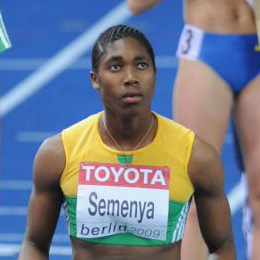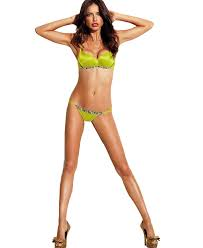Women in media and theories on gender overlap to create expectations for females that may be difficult to live up to. In my Communications 101 class, we are learning about different perceptions of people in the media. This week we are focusing on feminism and the changes in the portrayal of women in the media over time.

Our reading on Caster Semenya and the role of gender in sports competition can relate to the issue of feminism.
The types of feminism the Caster article describes are liberal and essentialism. Liberal feminism says “gender roles are contingent, and should not limit or determine the opportunities any given individual has”. This means that the roles of men and women are based on circumstance. The essentialist theory says that “gender categories are real and permanent, but it doesn’t mean they both aren’t valuable”.
There are barriers to gender, as there are for people with disabilities, like saying that women can’t do something, such as play sports.

Caster is told that she cannot compete in running on the international level because her gender is questioned, mainly because her times were equivalent to or faster than men.
In communications, the two types of feminism we have learned about so far are embedded feminism and enlightened sexism. Embedded feminism is when “feminist gains, attitudes, and achievements are embedded into our cultural fabric”. Enlightened sexism “resurrects stereotypes of girls and women, and insists that it is okay because “equality has been achieved””.
Caster experiences a type of enlightened sexism because the people that are against her competing are subject to stereotypes. Women in media are portrayed as “objects to be looked at, with their bodies under constant scrutiny and surveillance”. There are gaps between images and reality in Caster’s case. Young girls are looking at advertisements of thin, white women who set unrealistic standards. Caster would be a much more positive role model for girls, as someone who worked hard to get to where she is and whose body type and background are more similar to normal people than airbrushed models.
There is also evidence of embedded feminism. There are mixed messages of “both strong women and objectified women” in media. The problem with Caster’s story is that she is truly a strong woman, one who has practiced hard and overcome adversity to run record on a high level.

Yet the reason so many people have problems with her could be attributed to her lack of similarity to the stereotypical fashionable women or athletes. Women are expected to display their femininity at all times, no matter what they are doing, while still being judged for working to be seen as equals in society.
The essentialist theory could be questioned in light of female portrayals in media. While I think it is necessary to recognize the distinction between genders, subjecting women to certain expectations is taking it to the extreme.

I find it very interesting how you identify the many types of feminism. People always often assume that there is just one and that is entirely false. Women are always portrayed in a specific way in the media and it can be very offsetting to young females. Growing up with two brothers, I was a complete tomboy and loved sports, outdoor activities, etc. because that is what I always saw them doing. I became interested in more “girly” things when I started school with other girls. The social pressure of being a certain way at such a young age is very upsetting. I agree that there should be more variety of women for girls to look up to so that they can emulate who they would most likely want to be like and not just have one type of girl to look at.
LikeLike
I loved the way you portray women and the many types of feminism in this blog post. Personally, I think it is completely ridiculous that women are pressured to act and behave a certain way, a “girly” way. This societal norm needs to change and has made lot of progress through the heroism of people like Caster. Victoria Secret fashion shows, magazines, actresses, and celebrities give women an image that is categorized by the whole gender. Any deviation from this categorization causes people to not only judge, but also criticize this “females” as unfeminine. Many girls love to do so-called manly things and vice versa; however, only girls are criticized for there interests in this case. If a guy likes to cook, sew, wear pink, watch romantic shows (all things associated with feminism in today’s society), they will never be judges and people will accept his difference. This double standard needs to change for true progress and true equality in America and around the world.
LikeLike